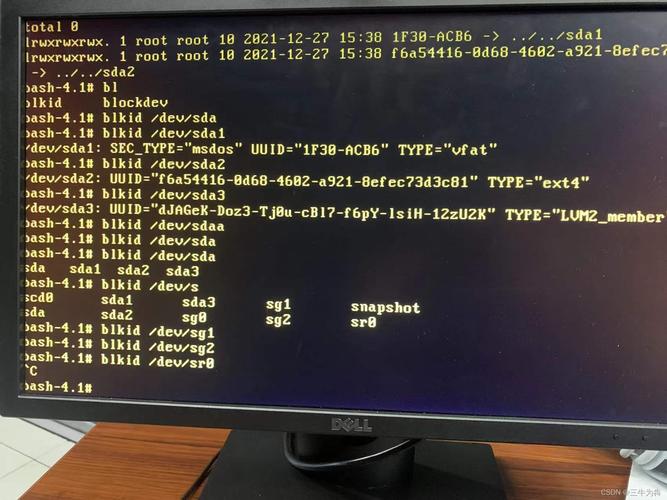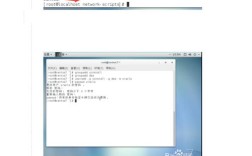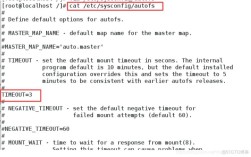CentOS 中的init.d 详解
一、

在Linux操作系统中,init.d 是一个目录,用于存放系统启动脚本和服务管理脚本,这些脚本通常用于启动、停止或重启特定的服务,本文将详细介绍CentOS系统中的init.d目录及其相关配置和管理方法。
二、目录结构与文件
/etc/init.d/ 目录是存放所有系统初始化脚本的核心位置,该目录中的每个脚本通常对应一个服务,例如httpd、sshd等,这些脚本可以通过运行级别(runlevel)来控制服务的启动和停止。
示例文件列表:
- ls /etc/init.d/
输出可能包括以下内容:
- network sshd
- crond sudo
- ip6tables sysstat
- iptables ntpd
- killalljobs yumupdatecron
- ...
三、基本操作

1.添加新服务
要将新的服务添加到init.d目录中,可以按照以下步骤进行:
1、创建一个新的脚本文件,例如myservice。
2、编写脚本内容,确保其具有执行权限。
3、使用chkconfig命令将该服务添加到相应的运行级别中。
- touch /etc/init.d/myservice
- chmod +x /etc/init.d/myservice
- vi /etc/init.d/myservice
示例脚本内容:

- #!/bin/bash
- chkconfig: 2345 90 10
- description: My custom service script
- case "$1" in
- start)
- echo "Starting my service..."
- ;;
- stop)
- echo "Stopping my service..."
- ;;
- restart)
- echo "Restarting my service..."
- ;;
- *)
- echo "Usage: $0 {start|stop|restart}"
- exit 1
- ;;
- esac
- exit 0
使用chkconfig命令添加服务到运行级别:
- chkconfig add myservice
- chkconfig myservice on
2.删除服务
要删除一个服务,可以使用chkconfig命令:
- chkconfig del myservice
- rm /etc/init.d/myservice
四、管理服务状态
1.启动服务
- service myservice start
或
- /etc/init.d/myservice start
2.停止服务
- service myservice stop
或
- /etc/init.d/myservice stop
3.重启服务
- service myservice restart
或
- /etc/init.d/myservice restart
4.查看服务状态
- service myservice status
或
- /etc/init.d/myservice status
五、高级配置与管理
1.修改运行级别
运行级别决定了哪些服务在启动时被加载,可以使用chkconfig命令来设置服务的运行级别:
- chkconfig myservice on # 在所有运行级别启用服务
- chkconfig myservice off # 在所有运行级别禁用服务
- chkconfig list myservice # 查看服务的运行级别设置
2.自定义服务脚本
服务脚本通常包含以下几个部分:
描述信息:如服务名称、描述等。
启动逻辑:定义如何启动服务。
停止逻辑:定义如何停止服务。
重启逻辑:定义如何重启服务。
状态检查:定义如何检查服务状态。
示例自定义服务脚本(/etc/init.d/mycustomservice):
- #!/bin/bash
- chkconfig: 2345 80 20
- description: My Custom Service Script
- case "$1" in
- start)
- echo "Starting My Custom Service..."
- # 启动命令,systemctl start mycustomservice@$INSTANCE
- ;;
- stop)
- echo "Stopping My Custom Service..."
- # 停止命令,systemctl stop mycustomservice@$INSTANCE
- ;;
- restart)
- echo "Restarting My Custom Service..."
- # 重启命令,systemctl restart mycustomservice@$INSTANCE
- ;;
- status)
- echo "Checking My Custom Service Status..."
- # 状态检查命令,systemctl status mycustomservice@$INSTANCE
- ;;
- *)
- echo "Usage: $0 {start|stop|restart|status}"
- exit 1
- ;;
- esac
- exit 0
确保脚本具有可执行权限:
- chmod +x /etc/init.d/mycustomservice
然后使用chkconfig命令将其添加到运行级别:
- chkconfig add mycustomservice
- chkconfig mycustomservice on
六、归纳与最佳实践
init.d目录在CentOS系统中扮演着重要的角色,通过合理地管理和配置这些脚本,可以有效地控制系统服务的启动和停止,以下是一些最佳实践建议:
1、保持脚本简洁:脚本应尽量简洁明了,避免复杂的逻辑。
2、使用绝对路径:在脚本中使用绝对路径,以确保在任何环境下都能正确执行。
3、记录日志:为每个关键操作添加日志记录,以便后续排查问题。
4、定期备份:定期备份init.d目录下的重要脚本,以防意外情况发生。
5、测试充分:在生产环境中部署前,务必在测试环境中充分测试脚本的功能和稳定性。
通过以上方法和建议,可以更好地管理和维护CentOS系统中的服务,确保系统的稳定运行。










